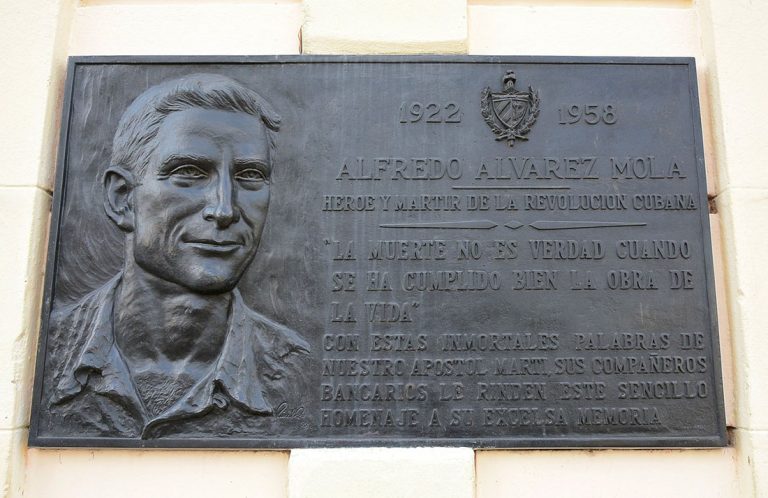She spoke of him with such familiarity that she could feel her presence in that house, for her he was just another friend, an admirable human being, small in stature but immense in his values. They called him Alfredito for the affection accumulated in so many years of absence.
This morning when I received a book by -Alberto Albariño Atiénzar- dedicated to the life of the Camagüey revolutionary Alfredo Álvarez Mola, I remembered this story that my friend Iris Martínez tells me sometimes, who was a bank worker for 30 years and had the honor to share with her husband Bebo, José Ramón Márquez, the admiration for his comrade in the struggle.
Memories of Alfredito
If something Iris keeps with passion, in addition to Bebo’s documents, it is the admiration that every bank worker feels for his martyrs.
In the case of Álvarez Mola, his courage distinguishes him; she describes him as a man of small and thin stature, but with courage to the test of everything.
It is evidenced in one of his feats to fulfill a mission, in the Royal Banks of Canada itself where he worked, located on the corner of Cisneros and the Workers Square. A plaque attached to the side of the building, today reminds us of the revolutionary who paid with his blood the freedom of Cuba.
The mission
Alfredito needed to enter the bank to give instructions to other union colleagues, who participated with him in the strikes and actions of the movement, by that time he was already watched and highly wanted by the Batista police, for which he masked himself with a priest’s cassock and with his face half covered, he thus managed to accomplish his task without being noticed.
The Revolutionary
Few know of his daring and all his revolutionary work, not only in the link between Camagüey and the Sierra Maestra, but also in Column-2 under the command of Camilo Cienfuegos, where Álvarez Mola helped with its advance to the west, contacting his collaborators and tracing the future routes to follow at night, to move without being captured.
When leaving the troop heading west, from Ciego de Ávila he returned to take refuge in the San Miguelito farm in Najasa, his purpose was to join another group, but it was then that an accusation cut short his plans and his life, a few days after the Revolutionary Triumph.
After multiple blows to the skull, he was shot dead, his small body was dismembered and buried in an aluminum milk churn, in areas of the farm, where they believed that no one would find, but an agricultural worker, made the complaint and finally his executioners were tried by the revolutionary court; the remains received the deserved homage of his people.
Bebo’s memories
When Alfredito was assassinated, by an accusation of a snitch named Basulto, Bebo dedicated himself to keeping his memories and doing justice to the wrongful death. For this reason, with the revolutionary triumph he managed, together with other colleagues, including Mario Herrero Toscano, to exhume his lost remains on the San Miguelito farm and bring them to the General Cemetery of Camagüey, where they rest in a dignified pantheon.
The text that motivated me today to this chronicle is titled A Little Giant, the friend Iris, after the death of her beloved Bebo, she jealously guarded some documents from that time, many supported and enriched the research to write the book.
Her friend Giant at heart is still present in Iris’s house, although her husband has already died, she remains faithful to his memories and to all that admiration that in life they professed to his boss in the clandestine cell, who was not only a guide in their ideals but also a sincere friend, who left us very young and without a farewell.
Translated by: Aileen Álvarez García






